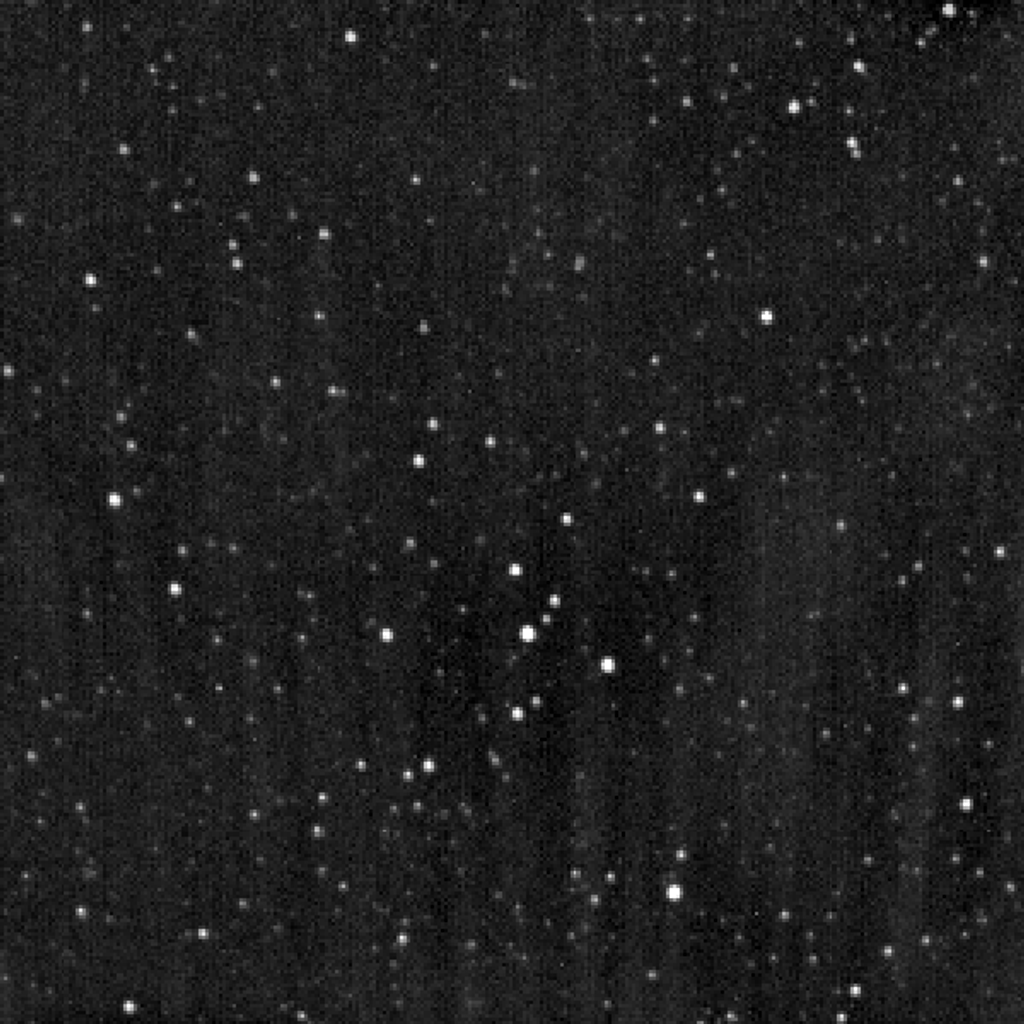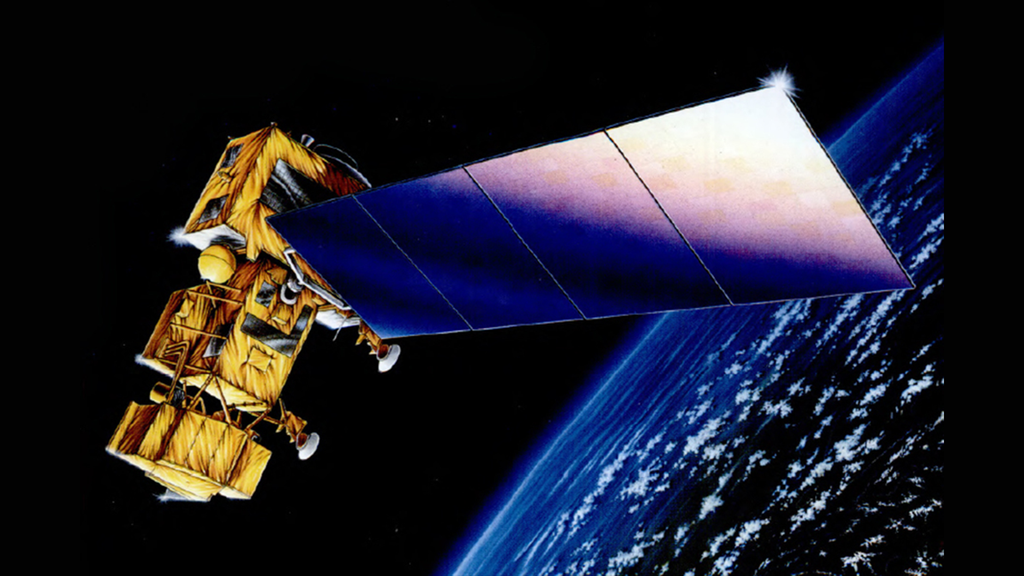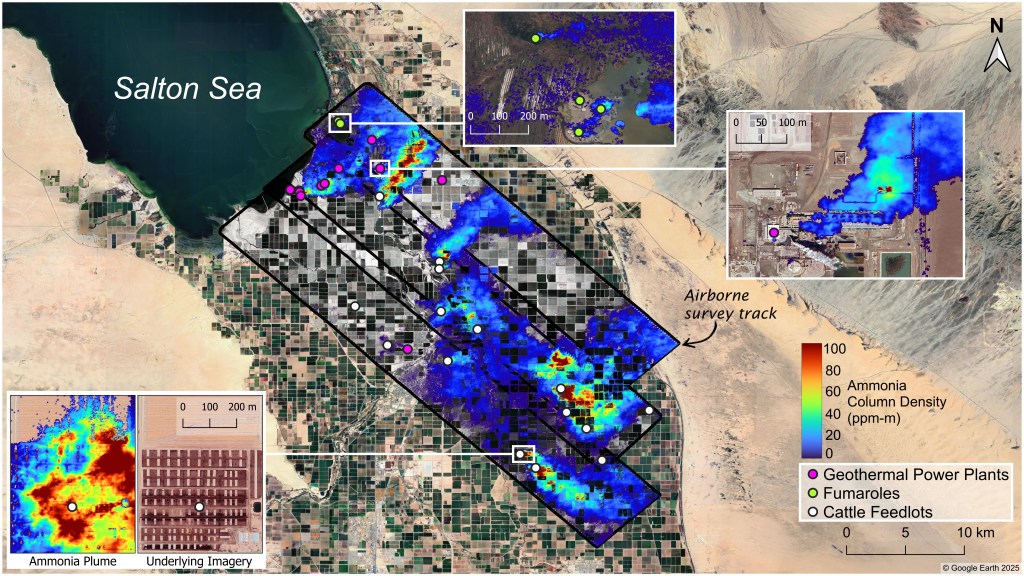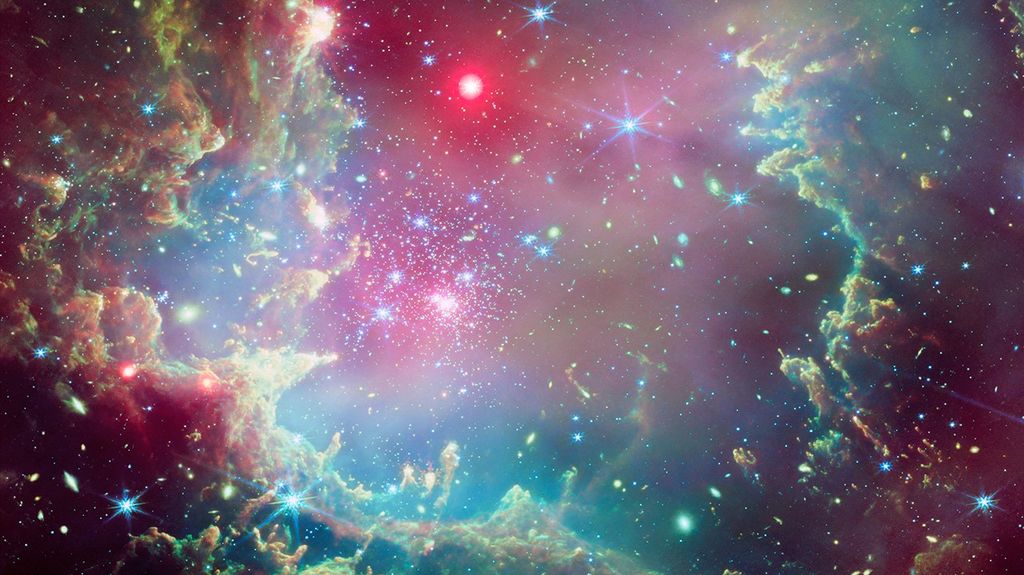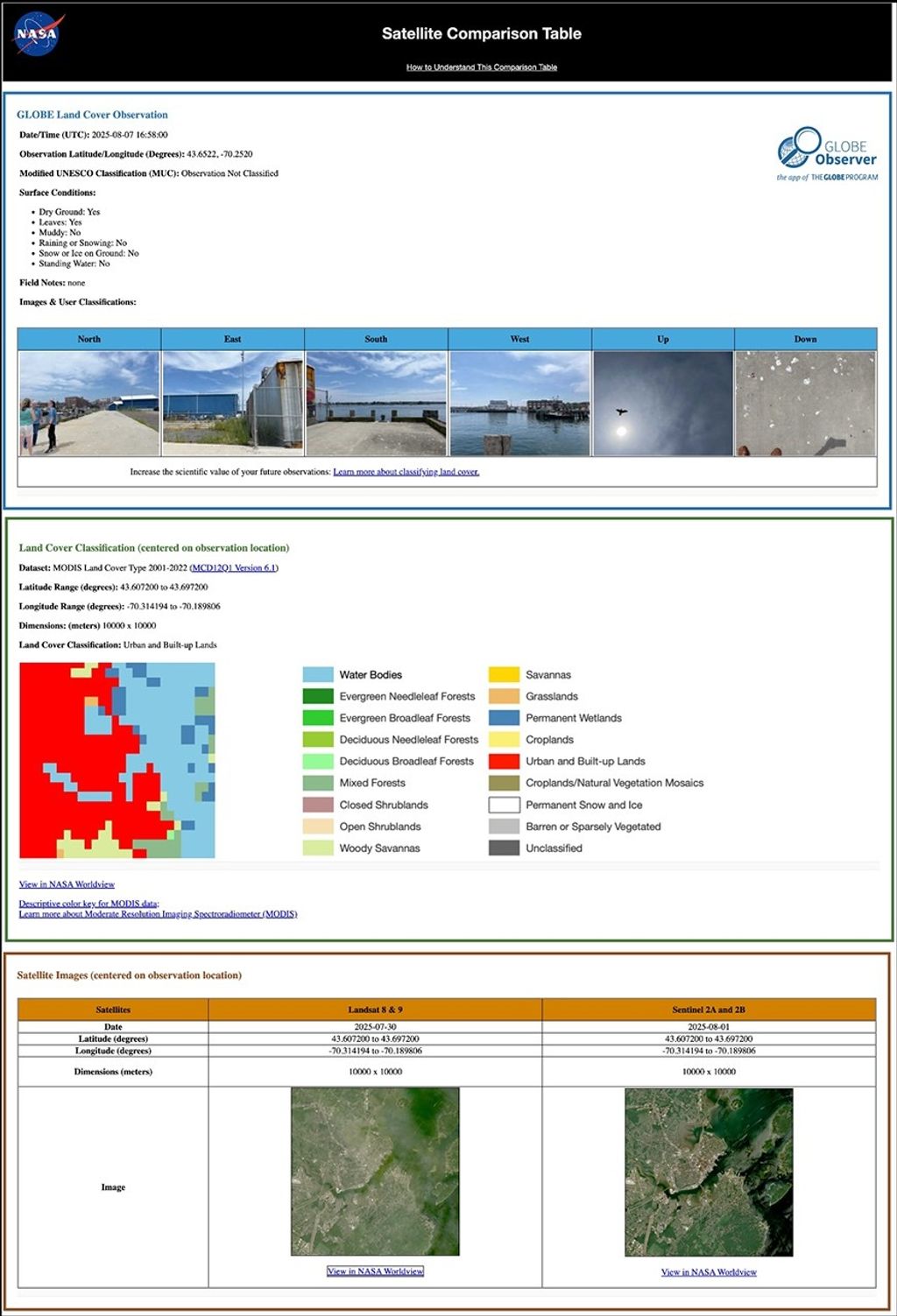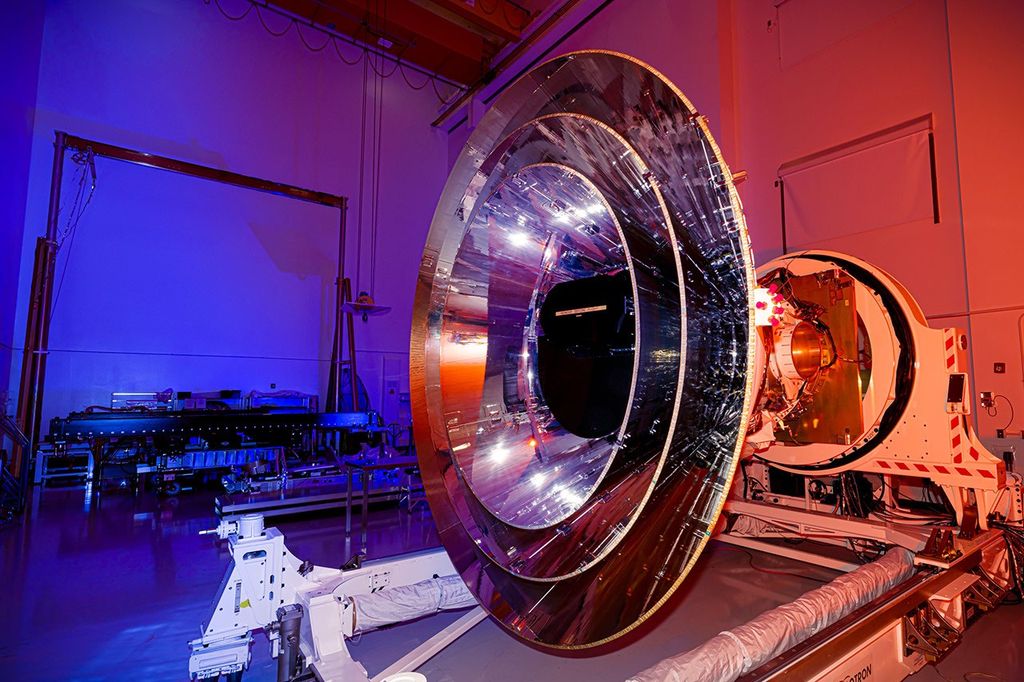1 min read
Light Echo around SN 2014J in M82

Hubble Spots Expanding Light Echo around Supernova
Light from a supernova explosion in the nearby starburst galaxy M82 is reverberating off a huge dust cloud in interstellar space.
The supernova, called SN 2014J, occurred at the upper right of M82, and is marked by an “X.” The supernova was discovered on Jan. 21, 2014.
The inset images at top reveal an expanding shell of light from the stellar explosion sweeping through interstellar space, called a “light echo.” The images were taken 10 months to nearly two years after the violent event (Nov. 6, 2014 to Oct. 12, 2016). The light is bouncing off a giant dust cloud that extends 300 to 1,600 light-years from the supernova and is being reflected toward Earth.
SN 2014J is classified as a Type Ia supernova and is the closest such blast in at least four decades. A Type Ia supernova occurs in a binary star system consisting of a burned-out white dwarf and a companion star. The white dwarf explodes after the companion dumps too much material onto it.
The image of M82 reveals a bright blue disk, webs of shredded clouds, and fiery-looking plumes of glowing hydrogen blasting out of its central regions.
Close encounters with its larger neighbor, the spiral galaxy M81, is compressing gas in M82 and stoking the birth of multiple star clusters. Some of these stars live for only a short time and die in cataclysmic supernova blasts, as shown by SN 2014J.
Located 11.4 million light-years away, M82 appears high in the northern spring sky in the direction of the constellation Ursa Major, the Great Bear. It is also called the “Cigar Galaxy” because of the elliptical shape produced by the oblique tilt of its starry disk relative to our line of sight.
The M82 image was taken in 2006 by the Hubble Space Telescope's Advanced Camera for Surveys. The inset images of the light echo also were taken by the Advanced Camera for Surveys.
The science team members are Y. Yang of Texas A&M University, College Station, and the Weizmann Institute of Science, Rehovot, Israel; P.J. Brown of Texas A&M University, College Station; L. Wang of Texas A&M University, College Station, and Purple Mountain Observatory, China; D. Baade, A. Cikota, F. Patat, and J. Spyromilio of the European Organization for Astronomical Research in the Southern Hemisphere, Garching, Germany; M. Cracraft and W.B. Sparks of the Space Telescope Science Institute, Baltimore, Maryland; P.A. Hoflich of Florida State University, Tallahassee; J. Maund and H.F. Stevance of the University of Sheffield, U.K.; X. Wang of Tsinghua University, Beijing Shi; and J.C. Wheeler of the University of Texas at Austin.
About the Object
- R.A. PositionR.A. PositionRight ascension – analogous to longitude – is one component of an object's position.09 55 42.12
- Dec. PositionDec. PositionDeclination – analogous to latitude – is one component of an object's position.+69 40 25.9
- ConstellationConstellationOne of 88 recognized regions of the celestial sphere in which the object appears.Ursa Major
- DistanceDistanceThe physical distance from Earth to the astronomical object. Distances within our solar system are usually measured in Astronomical Units (AU). Distances between stars are usually measured in light-years. Interstellar distances can also be measured in parsecs.11.4 million light-years
- DimensionsDimensionsThe physical size of the object or the apparent angle it subtends on the sky.Image is 7 arcmin across (about 23,000 light-years at the distance of M82)
About the Data
- Data DescriptionData DescriptionProposal: A description of the observations, their scientific justification, and the links to the data available in the science archive.
Science Team: The astronomers who planned the observations and analyzed the data. "PI" refers to the Principal Investigator. - InstrumentInstrumentThe science instrument used to produce the data.ACS/WFC
- Exposure DatesExposure DatesThe date(s) that the telescope made its observations and the total exposure time.Mar. 2014 - Apr. 2016
- FiltersFiltersThe camera filters that were used in the science observations.F435W, F555W, F658N, F814W
- Object NameObject NameA name or catalog number that astronomers use to identify an astronomical object.SN 2014J in M82
- Object DescriptionObject DescriptionThe type of astronomical object.Light echo around a supernova explosion
- Release DateNovember 9, 2017
- Science ReleaseHubble Shows Light Echo Expanding from Exploded Star
- Credit

These images are a composite of separate exposures acquired by the ACS instrument on the Hubble Space Telescope. Several filters were used to sample various wavelength ranges. The color results from assigning different hues (colors) to each monochromatic (grayscale) image associated with an individual filter. In this case, the assigned colors are: Blue: F435W Green: F555W Orange: F658N Red: F814W
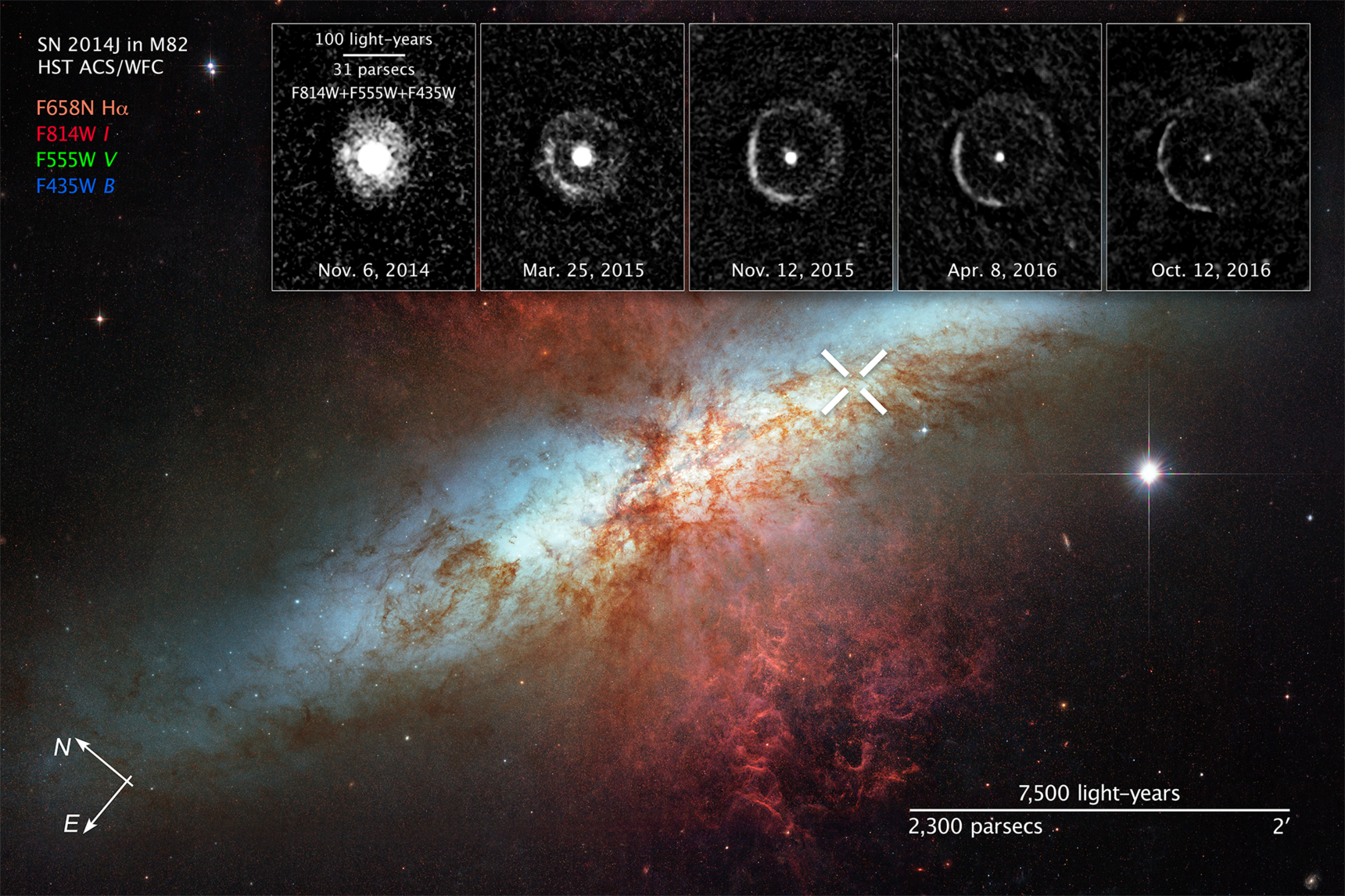
Related Images & Videos

Zooming in on a Light Echo
This video sequence takes the viewer into the nearby starburst galaxy M82, where a shell of light surrounding an exploding star is moving through interstellar space. The light was emitted from supernova SN 2014J, which was first observed in January 2014. Nearly three years...

Zooming in on a Light Echo (Narrated)
This video sequence takes the viewer into the nearby starburst galaxy M82, where a shell of light surrounding an exploding star is moving through interstellar space. The light was emitted from supernova SN 2014J, which was first observed in January 2014. Nearly three years...

Zooming in on a Light Echo (Annotated)
This video sequence takes the viewer into the nearby starburst galaxy M82, where a shell of light surrounding an exploding star is moving through interstellar space. The light was emitted from supernova SN 2014J, which was first observed in January 2014. Nearly three years...

Light Echo Expanding from Exploded Star (Black-and-White)
A gush of light unleashed by the explosive death of a star is the gift that keeps on giving. The dead star is no longer visible, but the light emitted by the stellar blast, called a supernova, is still reverberating through space three years after the star’s demise was...

Light Echo Expanding from Exploded Star
A gush of light unleashed by the explosive death of a star is the gift that keeps on giving. The dead star is no longer visible, but the light emitted by the stellar blast, called a supernova, is still reverberating through space three years after the star's demise was...
Share
Details
Claire Andreoli
NASA’s Goddard Space Flight Center
Greenbelt, Maryland
claire.andreoli@nasa.gov






